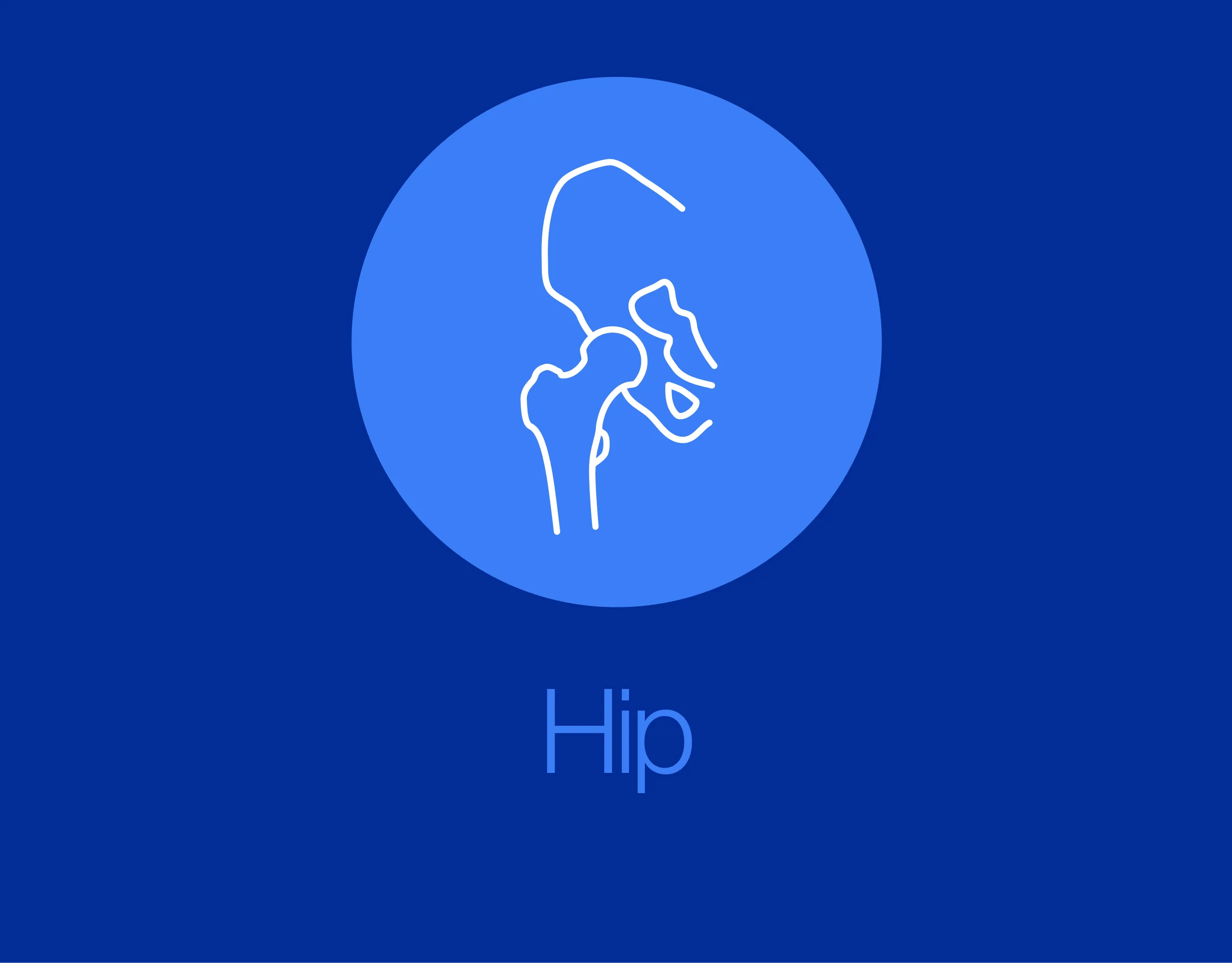ORIF - Posterior SI fracture fixation
1. Introduction
A crescent fracture is a fracture dislocation of the SI joint.
This injury involves a ligamentous disruption of the inferior part of the SI joint, and a vertical fracture of the posterior ilium that extends from the SI joint and exits the iliac crest.
The posterior superior iliac spine remains firmly attached to the sacrum via the superior portion of the posterior ligamentous complex.
The remaining anterior fragment is more mobile to internal rotation but remains relatively stable to external rotation and vertical forces.
This fracture is always combined with an injury to the anterior pelvis, most often fractures of the pubic rami.
These fractures are unstable.
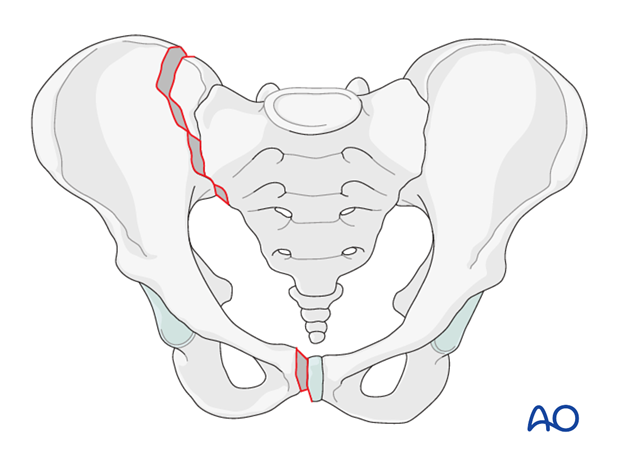
When reducing and fixing the fracture of the iliac wing, the SI joint is indirectly reduced and the function of the posterior ligaments is restored.
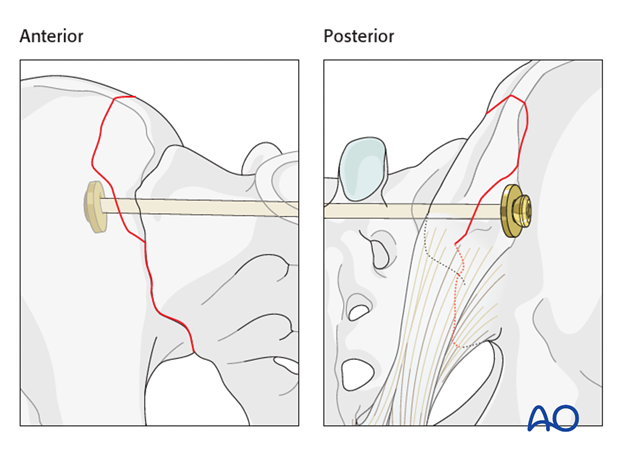
Note to preparation and approach
To allow a good reduction of the fracture, the posterior approach to the SI joint should be made slightly medial to the posterior iliac spine. One should not dissect through the gluteal muscles, but rather lift them from their attachment. This is to facilitate reduction and avoid invagination of the soft tissues.
Alternatively if the crescent fragment is large, fixation can be performed via an anterior approach.
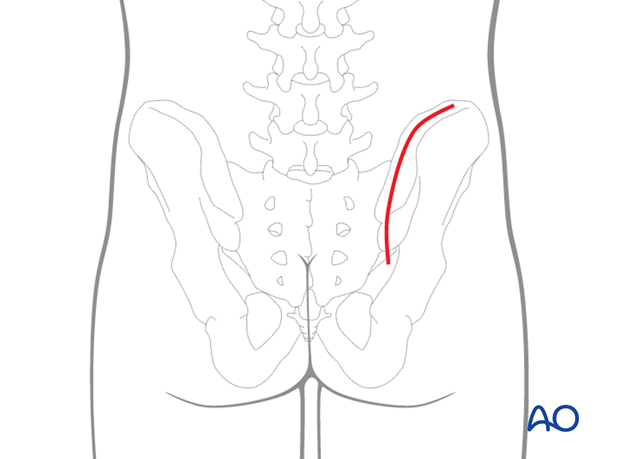
The patient is placed in a prone position. The thorax and abdomen should be placed on chest rolls without any pressure to the pelvis to facilitate manipulation of the pelvis as well as to facilitate ventilation of the patient during the operation.
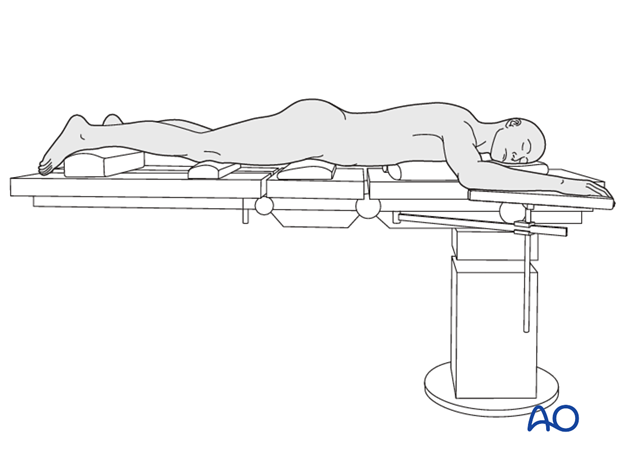
Choice of fixation
Depending on the fracture line, the type of fixation may vary.
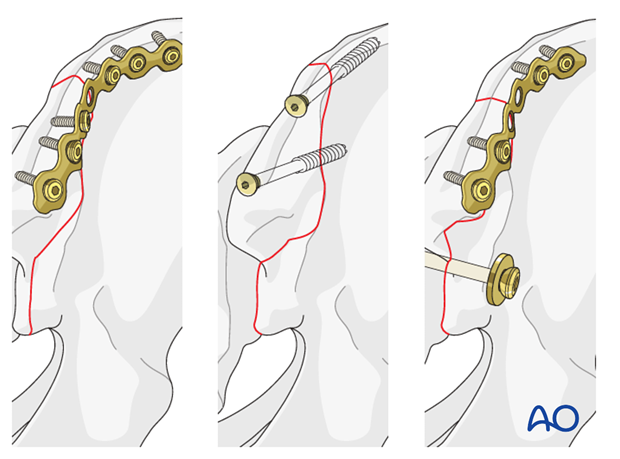
With small fragments, an additional SI screw may provide additional stability of the fixation.
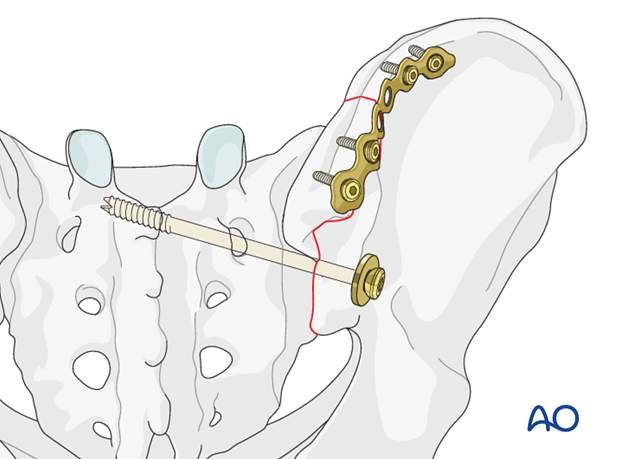
2. Reduction
Preparation of fracture site
The fracture is exposed with a laminar spreader, cleaned of debris, interposed periosteum, and ligaments.

The fracture is reduced using pelvic clamps and reduction forceps. In some cases additional Schanz screws are inserted and used as joysticks.
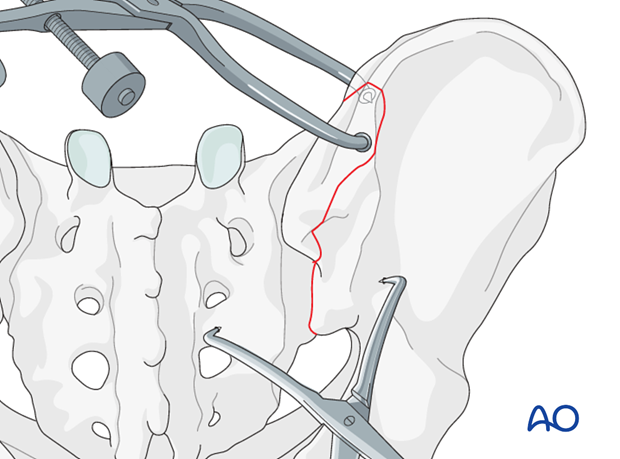
If the hemipelvis is displaced posteriorly, a slight rotation of the patient to the contralateral side may facilitate the reduction.
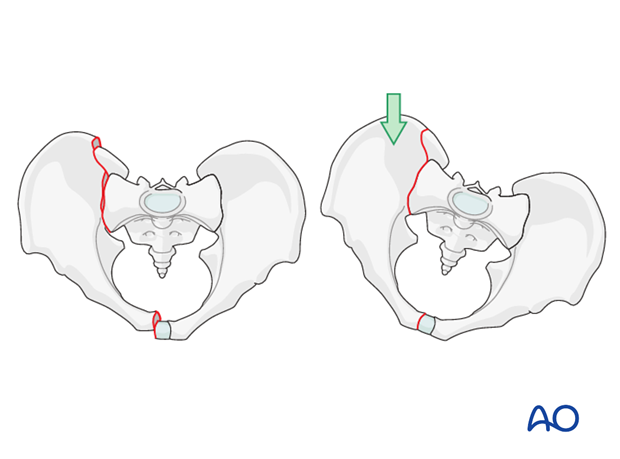
Reduction of the SI joint can be verified by palpating the anterior SI joint surface.
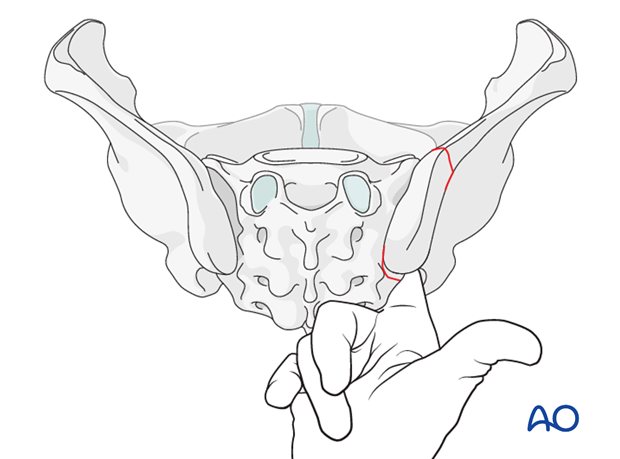
Temporary fixation
K-wires are inserted for temporary fixation.
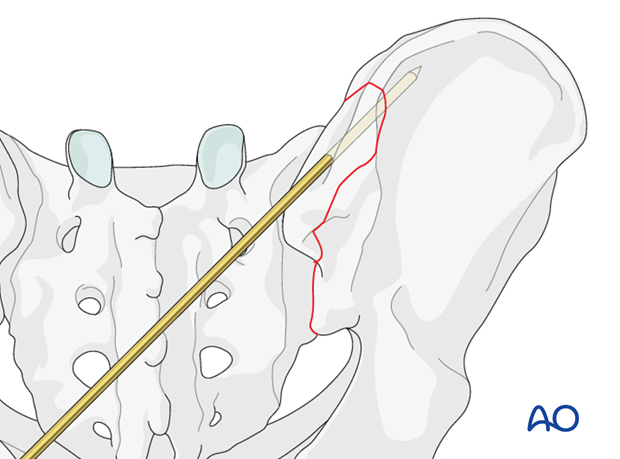
3. Fixation
Plate selection
For large fragments, a 3.5 mm reconstruction plate is used. In osteoporotic bone, an angle stable plate is preferred.
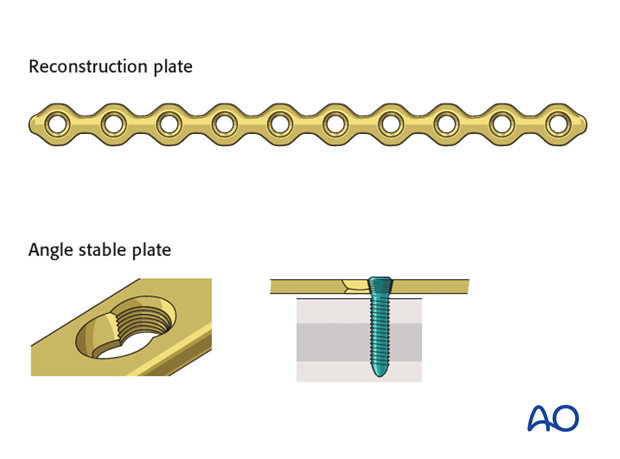
The plate is shaped to fit the contour of the bone and placed on the lateral rim.
Fixation is completed using bicortical screws.
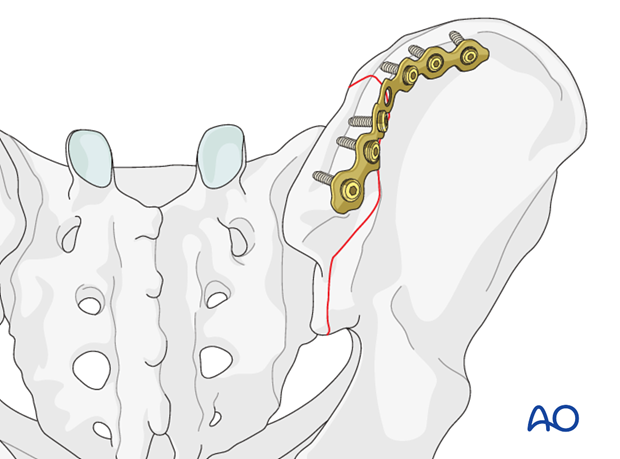
If the fracture plane is perpendicular to the iliac wing, stability may be increased using cancellous lag screws in addition to the plate.
Screws should not be used alone unless the bone quality is good.
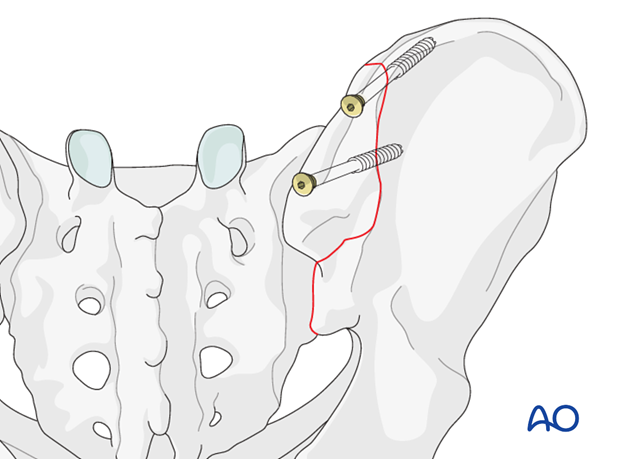
If the crescent fragment is small, a plate may not provide sufficient hold. Additional stability can be achieved by insertion of a SI screw.
The SI screw is inserted following the same principles as for the fixation of a SI dislocation.

4. X-rays
After completion of internal fixation, confirm the final reduction and hardware position intraoperatively by AP, inlet and outlet radiographic imaging.

5. Aftercare following open reduction and fixation
Postoperative blood test
After pelvic surgery, routine hemoglobin and electrolyte check out should be performed the first day after surgery and corrected if necessary.
Bowel function and food
After extensile approaches in the anterior pelvis, the bowel function may be temporarily compromised. This temporary paralytic ileus generally does not need specific treatment beyond withholding food and drink until bowel function recovers.
Analgesics
Adequate analgesia is important. Non pharmacologic pain management should be considered as well (eg. local cooling and psychological support).
Anticoagulation
Prophylaxis for deep vein thrombosis (DVT) and pulmonary embolus is routine unless contraindicated. The optimal duration of DVT prophylaxis in this setting remains unproven, but in general it should be continued until the patient can actively walk (typically 4-6 weeks).
Drains
Dressings should be removed and wounds checked after 48h, with wound care according to surgeon's preference.
Wound dressing
Dressings should be removed and wounds checked after 48h, with wound care according to surgeon's preference.
Physiotherapy
The following guidelines regarding physiotherapy must be adapted to the individual patient and injury.
It is important that the surgeon decide how much mechanical loading is appropriate for each patient's pelvic ring fixation. This must be communicated to physical therapy and nursing staff.
For all patients, proper respiratory physiotherapy can help to prevent pulmonary complications and is highly recommended.
Upper extremity and bed mobility exercises should begin as soon as possible, with protection against pelvic loading as necessary.
Mobilization can usually begin the day after surgery unless significant instability is present.
Generally, the patient can start to sit the first day after surgery and begin passive and active assisted exercises.
For unilateral injuries, gait training with a walking frame or crutches can begin as soon as the patient is able to stand with limited weight bearing on the unstable side.
In unstable unilateral pelvic injuries, weight bearing on the injured side should be limited to "touch down" (weight of leg). Assistance with leg lifting in transfers may be necessary.
Progressive weight bearing can begin according to anticipated healing. Significant weight bearing is usually possible by 6 week but use of crutches may need to be continued for three months. It should remembered that pelvic fractures usually heal within 6-8 weeks, but that primarily ligamentous injuries may need longer protection (3-4 months).
Fracture healing and pelvic alignment are monitored by regular X-rays every 4-6 weeks until healing is complete.
Bilateral unstable pelvic fractures
Extra precautions are necessary for patients with bilaterally unstable pelvic fractures. Physiotherapy of the torso and upper extremity should begin as soon as possible. This enables these patients to become independent in transfer from bed to chair. For the first few weeks, wheelchair ambulation may be necessary. After 3-4 weeks walking exercises in a swimming pool are started.
After 6 weeks, if pain allows, the patient can start walking with a three point gait, with less weight bearing on the more unstable side.
Full weight bearing is possible after complete healing of the bony or ligamentous legions, typically not before 12 weeks.
